What we do

Biodiversity Science
Traditional approaches may not be enough to stem and resolve the biodiversity crisis. Since biodiversity change comes from the growing influence of humans on their environment, both natural and social science research must be combined.
Biodiversity science is therefore a multidisciplinary field that uses tools and theories from different fields such as molecular biology, taxonomy, genetics, traditional knowledge, political science, eco-informatics, economics and ecology.
Research framework
Foster scientific collaboration
Training the next generation
Knowledge to action
QCBS research showcase
IPBES
Methodological assessment on monitoring biodiversity and nature's contributions to people
 The Intergovernmental Science-Policy Platform on Biodiversity and Ecosystem Services (IPBES) is an independent intergovernmental body established to strengthen the science-policy interface for biodiversity and ecosystem services for the conservation and sustainable use of biodiversity, long-term human well-being and sustainable development.
The Intergovernmental Science-Policy Platform on Biodiversity and Ecosystem Services (IPBES) is an independent intergovernmental body established to strengthen the science-policy interface for biodiversity and ecosystem services for the conservation and sustainable use of biodiversity, long-term human well-being and sustainable development.
In decision IPBES-10/1, the Plenary approved a methodological assessment on monitoring biodiversity and nature’s contributions to people. Following a call for expressions of interest, McGill University made an offer to host the technical support unit for the assessment, which was accepted by the Bureau on 22 November 2023.
The assessment aims to support national and global efforts to:
(a) monitor biodiversity, nature’s contributions to people and the drives of observed changes; and
(b) monitor progress towards the goals and targets of the Kunming-Montreal Global Biodiversity Framework (GBF), in support of implementation of the Convention on Biological Diversity and its three objectives, while contributing to monitoring of the Sustainable Development Goals and other relevant multilateral environmental agreements. The assessment will evaluate existing data and systems, as well as those needed to calculate the indicators of the GBF monitoring framework, prioritizing headline indicators and assessing data availability for others. It will examine existing capacities and resources for data collection and analysis at national and global scales, identifying gaps in data availability and access, including biases in taxonomic, geographic, and temporal coverage across marine, inland water, and terrestrial ecosystems. Challenges and barriers related to data generation, access, sharing, and the application of robust statistical methods for trend detection and attribution will also be assessed.
Finally, the assessment will highlight opportunities to strengthen monitoring capacities particularly in developing countries. It will also assess opportunities to advance community-based, Indigenous, and citizen-science monitoring, and will consider options to enhance cooperation, promote resource-sharing and reporting, and facilitate the integration of data from multiple sources, with the goal of improving understanding of biodiversity change, especially in underrepresented regions.
For more information, contact us
Funding source: IPBES, McGill University (Department of Biology)
Andrew Gonzalez, Fanie Pelletier
Biodiversité Québec
Collect observation data, improve biodiversity monitoring in Quebec, and make syntheses and analyses accessible to the public
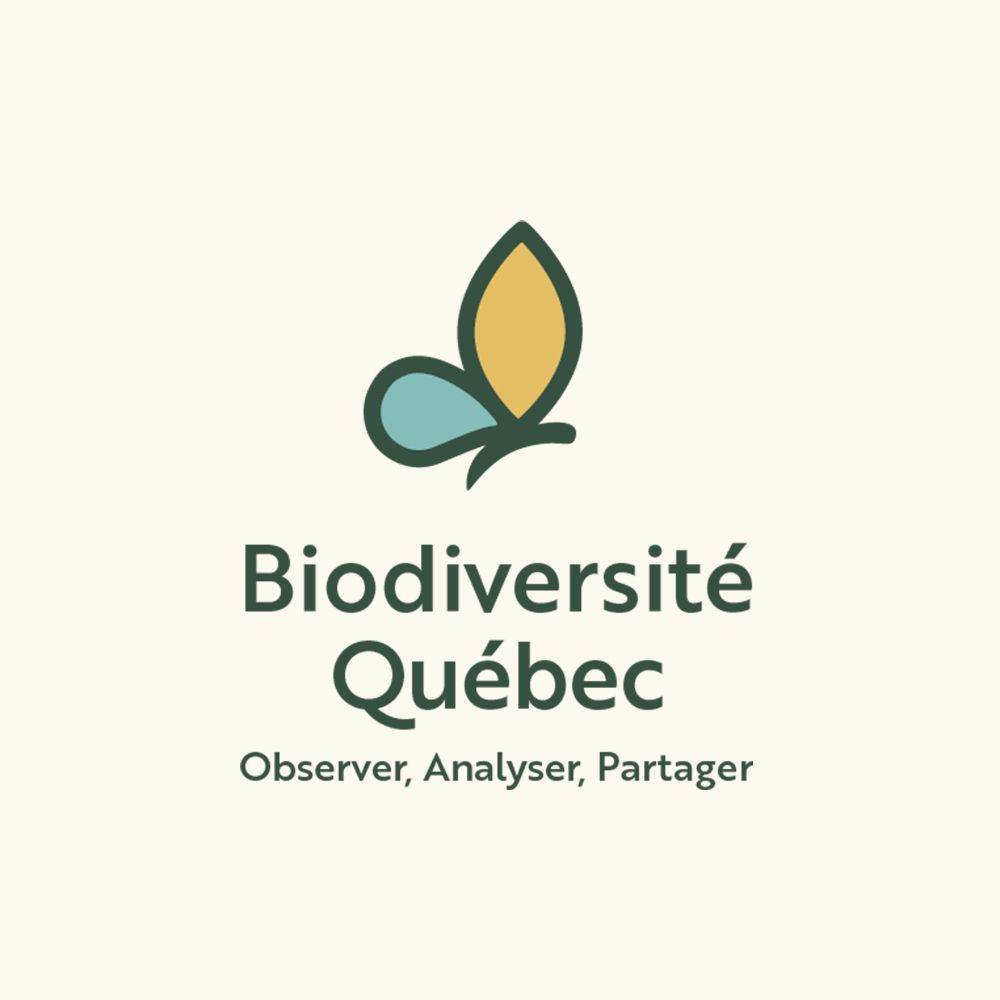 Biodiversité Québec is a scientific partnership whose work focuses on communicating information on the state of biodiversity and its changes. It aims to become a key agent for observing changes occurring in ecosystems, in addition to disseminating popularized information. Its mission is to collect observation data, improve biodiversity monitoring in Quebec, and make syntheses and analyses accessible to the public. The initiative also aims to raise awareness among Quebecers about biodiversity issues, in addition to supporting decision-makers and land managers in taking biodiversity data into account. The Government of Quebec and university researchers bring together numerous partners within a single network. Biodiversité Québec relies on a collective effort to acquire knowledge in the field, enhance data value, and use new technologies. The pooling of collected data allows for new scientific advances to anticipate the effects of climate and human activities on ecosystems.
Biodiversité Québec is a scientific partnership whose work focuses on communicating information on the state of biodiversity and its changes. It aims to become a key agent for observing changes occurring in ecosystems, in addition to disseminating popularized information. Its mission is to collect observation data, improve biodiversity monitoring in Quebec, and make syntheses and analyses accessible to the public. The initiative also aims to raise awareness among Quebecers about biodiversity issues, in addition to supporting decision-makers and land managers in taking biodiversity data into account. The Government of Quebec and university researchers bring together numerous partners within a single network. Biodiversité Québec relies on a collective effort to acquire knowledge in the field, enhance data value, and use new technologies. The pooling of collected data allows for new scientific advances to anticipate the effects of climate and human activities on ecosystems.
For more information, contact us :
Funding source: CSRNG Alliance, with contributions from: MELCCFP, Fondaction, ECCC, Insectarium de Montréal, Wildlife Conservation Society, Conservation de la Nature Canada, SNAP Québec.
Guillaume Blanchet, Dominique Gravel, Laura Pollock, Coralie Beaumont, Vincent Beauregard, William Cabrera, Victor Cameron, Vanessa Di Maurizio, Samuel Enright, Kim Gauthier-Schampaert, Claire-Cécile Juhasz, Kaesha Maheu-Raymond, Benjamin Mercier, El-Amine Mimouni, François Rousseu, Marie-Pierre Varin
BON in a Box
Building Biodiversity Observation Networks for biodiversity monitoring and conservation decision-making
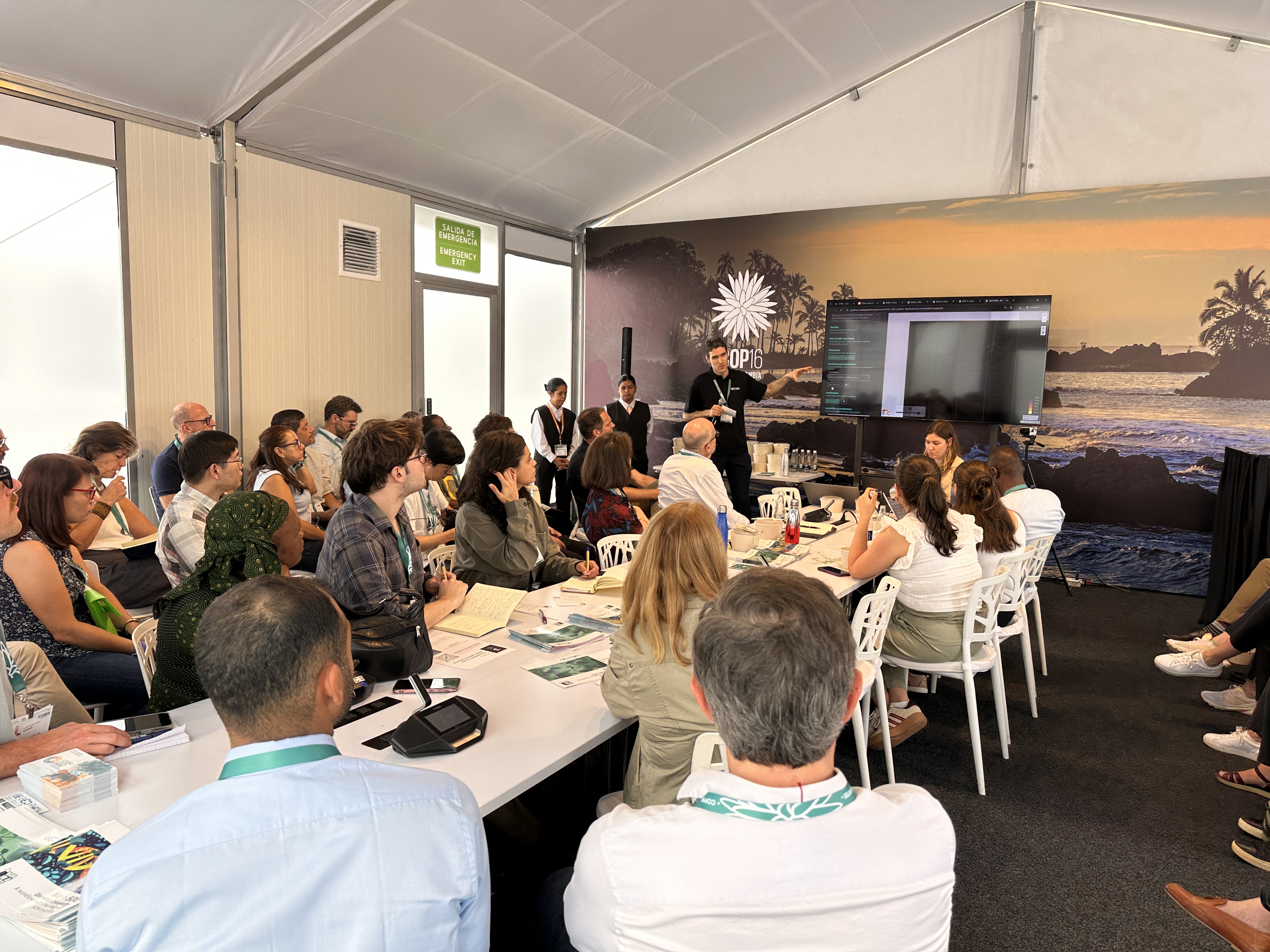
For more information, contact us :
Funding source: Microsoft, QCBS
Guillaume Blanchet, Andrew Gonzalez, Dominique Gravel, Brian Leung, Pedro Peres-Neto, Timothée Poisot, Laura Pollock, María Isabel Arce Plata, Michael Catchen, Jory Griffith, Jean-Michel Lord, Victor Rincon Parra, Juan Zuloaga
Blitz the Gap Guided biodiversity sampling in Québec
The “Blitz the Gap” project aims to leverage the QCBS’s broad network to fill biodiversity data gaps.
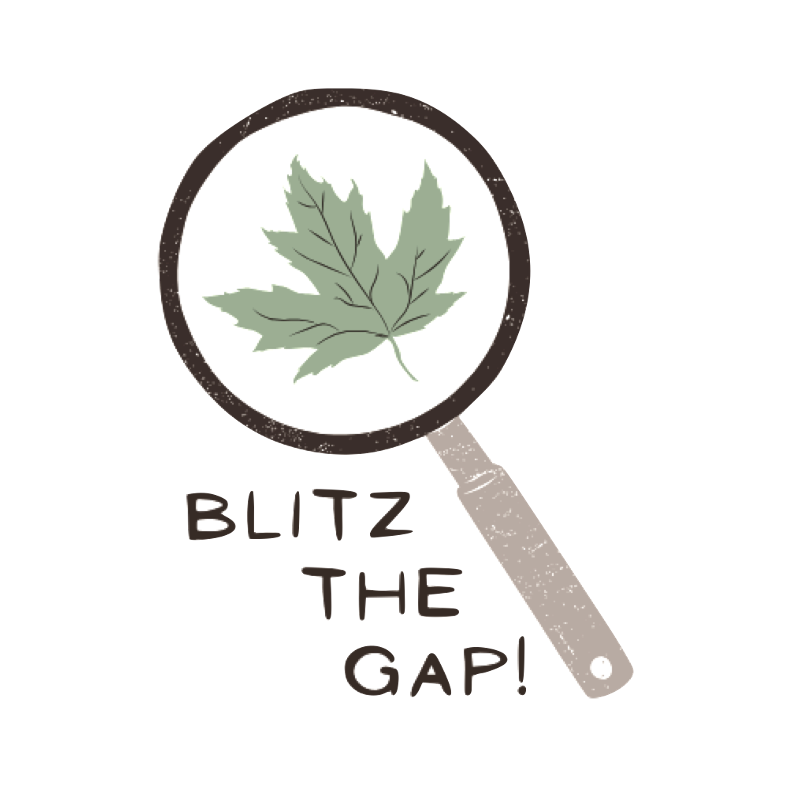 Québec is vast and undersampled, with over 90% of the land area without any occurrence records of any taxa. These gaps would be incredibly expensive and time-consuming to fill with traditional scientific and management surveys. Citizen science offers the only viable pathway to filling these gaps quickly. However, citizen science is biased toward certain taxa and places, leaving major gaps that require coordination to fill. The QCBS is well-positioned to help fill this gap, because it is a network of universities and researchers who live, work, and study in many places in Québec. The “Blitz the Gap” (www.blitzthegap.org) project aims to leverage the QCBS’s broad network to fill biodiversity data gaps. The main funding component are Champion Grants, which are offered to QCBS graduate student and postdoc members to plan a bioblitz with a local community, a park, a library or school, or to support sampling events for themselves and their lab group. These grants offer leadership and development opportunities for QCBS members to spearhead their own initiatives to close the data gaps that limit our capacity to monitor biodiversity in Québec, and to build closer ties between the QCBS and local communities. We partnered with James Pagé from iNaturalist Canada to advise us on the project. All observations are collected in the Blitz the Gap project on iNaturalist.ca (with a specific project for QCBS members: inaturalist.ca/projects/blitz-the-gap-qcbs-champions), and will be included in Biodiversité Québec’s Atlas database to monitor biodiversity changes in Québec. The next iteration will include automated “challenges” (i.e., priority maps and species lists). We are particularly excited about making an openly accessible Bon-in-a-Box project that will let scientists and conservationists toggle scenarios to build a custom sampling scheme for their purpose (e.g., improving range coverage for data-deficient species) and will allow transparent access to the full pipeline.
Québec is vast and undersampled, with over 90% of the land area without any occurrence records of any taxa. These gaps would be incredibly expensive and time-consuming to fill with traditional scientific and management surveys. Citizen science offers the only viable pathway to filling these gaps quickly. However, citizen science is biased toward certain taxa and places, leaving major gaps that require coordination to fill. The QCBS is well-positioned to help fill this gap, because it is a network of universities and researchers who live, work, and study in many places in Québec. The “Blitz the Gap” (www.blitzthegap.org) project aims to leverage the QCBS’s broad network to fill biodiversity data gaps. The main funding component are Champion Grants, which are offered to QCBS graduate student and postdoc members to plan a bioblitz with a local community, a park, a library or school, or to support sampling events for themselves and their lab group. These grants offer leadership and development opportunities for QCBS members to spearhead their own initiatives to close the data gaps that limit our capacity to monitor biodiversity in Québec, and to build closer ties between the QCBS and local communities. We partnered with James Pagé from iNaturalist Canada to advise us on the project. All observations are collected in the Blitz the Gap project on iNaturalist.ca (with a specific project for QCBS members: inaturalist.ca/projects/blitz-the-gap-qcbs-champions), and will be included in Biodiversité Québec’s Atlas database to monitor biodiversity changes in Québec. The next iteration will include automated “challenges” (i.e., priority maps and species lists). We are particularly excited about making an openly accessible Bon-in-a-Box project that will let scientists and conservationists toggle scenarios to build a custom sampling scheme for their purpose (e.g., improving range coverage for data-deficient species) and will allow transparent access to the full pipeline.
For more information, contact us :
Funding source: QCBS, Canadian Institute for Ecology and Evolution - Living Data Project, Environment and Climate Change Canada, NSERC
Guillaume Blanchet, Dominique Gravel, Katherine Hébert, Abbie Jones
The impact of the circular economy on biodiversity: towards an integrated approach to support decision-making
Developing a conceptual and operational framework, indicators and concrete tools to assess the impact of circularity strategies on biodiversity, and vice versa.
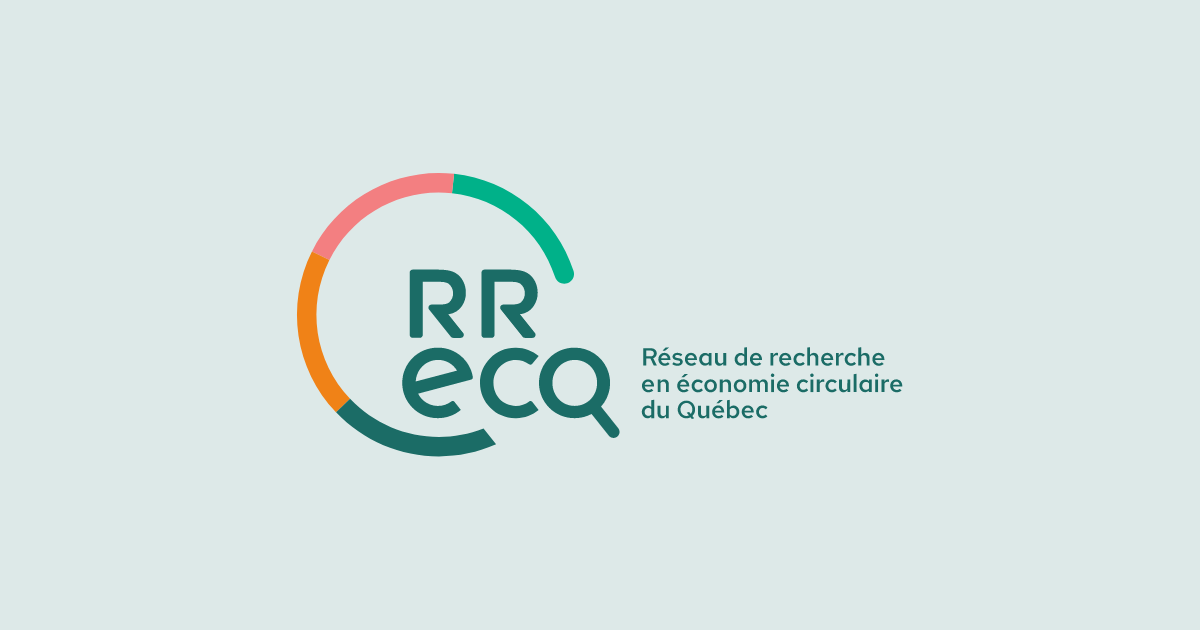 This transdisciplinary research project aims to strengthen the understanding and integration of the links between the circular economy (CE) and biodiversity, in order to support public and sectoral decision-making in line with the targets of the Kunming-Montreal Global Biodiversity Framework and Quebec's Nature 2030 Plan. The objective is to develop a conceptual and operational framework, indicators and concrete tools to assess the impact of circularity strategies on biodiversity, and vice versa. The project is led by a group of recognized academic and community partners, who bring together expertise in circular economy, biodiversity science and conservation:
This transdisciplinary research project aims to strengthen the understanding and integration of the links between the circular economy (CE) and biodiversity, in order to support public and sectoral decision-making in line with the targets of the Kunming-Montreal Global Biodiversity Framework and Quebec's Nature 2030 Plan. The objective is to develop a conceptual and operational framework, indicators and concrete tools to assess the impact of circularity strategies on biodiversity, and vice versa. The project is led by a group of recognized academic and community partners, who bring together expertise in circular economy, biodiversity science and conservation:
Quebec Circular Economy Research Network (RRECQ): A unique network in Canada, mobilizing more than 230 researchers to strengthen the capacity to deploy circularity strategies across industrial sectors and territories, with a view to a sustainable transition.
Quebec Centre for Biodiversity Science (QCBS): A recognized inter-institutional network that helps position Quebec as a leader in biodiversity science. It mobilizes a broad community of researchers around ecosystem monitoring, biodiversity change forecasting and decision-making support, drawing on a diversity of approaches ranging from observation technologies to social sciences.
Société pour la nature et les parcs (SNAP Québec): Non-profit organization dedicated to nature protection. Recognized for its collaborative approach with governments, First Nations, Inuit, industry stakeholders and local communities.
Biodiversité Québec: Initiative supported by the government and the scientific community. Aims to collect and promote biodiversity observation data, and to produce accessible syntheses and tools for decision-makers and land managers. By combining these expertises, the project aims to develop integrated and territorialized approaches, based on workshops, literature reviews and concrete case studies, in order to equip decision-makers and accelerate ecological transitions that bring benefits to nature and society.
For more information, contact us :
Funding source: MELCCFP, FRQ
Dominique Gravel, Fanie Pelletier, Rim Khlifa
Adapting to climate change
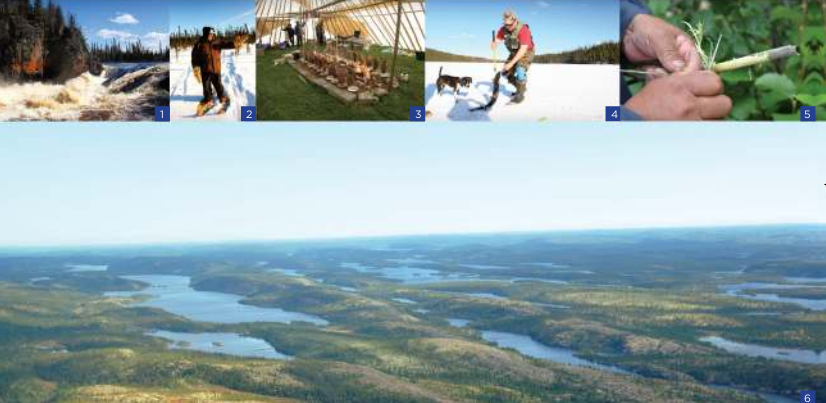 In 2009, initiated by the Prince Albert II of Monaco Foundation, the Government of Québec and the Ouranos Consortium launched an Atlas project on the biodiversity of northern Québec. This project aims to develop a tool to integrate knowledge of northern Québec’s biodiversity, taking into account the impacts of climate change.
In 2009, initiated by the Prince Albert II of Monaco Foundation, the Government of Québec and the Ouranos Consortium launched an Atlas project on the biodiversity of northern Québec. This project aims to develop a tool to integrate knowledge of northern Québec’s biodiversity, taking into account the impacts of climate change.
Sophie Calmé, Andrew Gonzalez, Fanie Pelletier
The Quebec Biodiversity and Business Assessment Project (QBBAP)
This initiative aims to create the right conditions for indentifying, testing, adapting and disseminating a range of tools that foster the integration of biodiversity concerns into daily business operations.
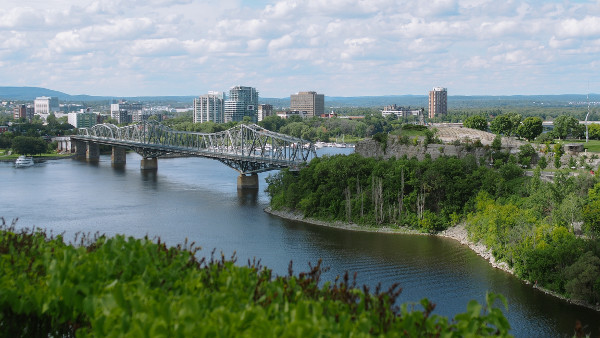 New initiatives are needed to reverse the observed trends of biodiversity loss, in particular, strategies that will enable this global problem to be taken into account through local and regional actions. One of the preferred approaches recognizes the role played by the business community and more generally the economy in the changes of biodiversity. In Quebec, there is a growing need for dialogue among stakeholders to enable the business community to become involved and to integrate biodiversity issues into corporate and practical corporate strategies. To meet these needs, the Biodiversity Science Center of Quebec and its partners launched a joint initiative: the Projet de Bilan de la biodiversité et des Entreprises du Québec (PBBEQ).
New initiatives are needed to reverse the observed trends of biodiversity loss, in particular, strategies that will enable this global problem to be taken into account through local and regional actions. One of the preferred approaches recognizes the role played by the business community and more generally the economy in the changes of biodiversity. In Quebec, there is a growing need for dialogue among stakeholders to enable the business community to become involved and to integrate biodiversity issues into corporate and practical corporate strategies. To meet these needs, the Biodiversity Science Center of Quebec and its partners launched a joint initiative: the Projet de Bilan de la biodiversité et des Entreprises du Québec (PBBEQ).
Jérôme Dupras, Andrew Gonzalez
Bio-Bridge
The core goal of the Bio-Bridge Initiative is the promotion and facilitation of technical and scientific cooperation.
 The QCBS in partnership with the World Conservation Monitoring Center (WCMC) was chosen to become the external partner of the CBD Secretariat for the implementation of the Bio-Bridge initiative. This initiative by the Republic of Korea to assist CBD Parties to implement all decisions adopted at COP 12 that together form the Road Map adopted in Pyeongchang for improving the implementation of the plan 2011-2020 Strategic Plan for Biodiversity as well as the achievement of the Aichi Targets and support the achievement of the Aichi Target 19 on technical and scientific cooperation.
The QCBS in partnership with the World Conservation Monitoring Center (WCMC) was chosen to become the external partner of the CBD Secretariat for the implementation of the Bio-Bridge initiative. This initiative by the Republic of Korea to assist CBD Parties to implement all decisions adopted at COP 12 that together form the Road Map adopted in Pyeongchang for improving the implementation of the plan 2011-2020 Strategic Plan for Biodiversity as well as the achievement of the Aichi Targets and support the achievement of the Aichi Target 19 on technical and scientific cooperation.
BIOS2
A community of early career researchers who explore and apply modern-day computational and quantitative techniques to address the challenges of biodiversity sciences.
 Biodiversity science progressed in the last fifteen years due to remarkable technical advances in computing power and data acquisition, resulting in large biodiversity databases. Increasing societal demands for assessment of the status of biodiversity under global changes is pushing ecology and environmental sciences towards a predictive science. Biodiversity monitoring programs implemented to track the impacts of major industrial projects (e.g. hydro-electricity dams, mines) generate massive amounts of information that can be used to predict future impacts of human actions on biodiversity. Other fields of life sciences, such as genomics and medicine, have met increasing data availability by developing computational infrastructure, data pipelines and analytic frameworks, while ecology is comparatively lagging behind. The Computational Biodiversity Science and Services training program (BIOS2) was developed to address this need.
BIOS2 is a community of early career researchers who are exploring and applying modern-day computational and quantitative techniques to address the challenges of biodiversity sciences. Through technical and cross-curricular training, working groups, internships, and collaborative and networking activities, the program aims to broaden the opportunities and skills of students and postdoctoral fellows, and prepare them for high-impact careers in biodiversity science.
More info: https://bios2.usherbrooke.ca, info.bio2@usherbrooke.ca
Biodiversity science progressed in the last fifteen years due to remarkable technical advances in computing power and data acquisition, resulting in large biodiversity databases. Increasing societal demands for assessment of the status of biodiversity under global changes is pushing ecology and environmental sciences towards a predictive science. Biodiversity monitoring programs implemented to track the impacts of major industrial projects (e.g. hydro-electricity dams, mines) generate massive amounts of information that can be used to predict future impacts of human actions on biodiversity. Other fields of life sciences, such as genomics and medicine, have met increasing data availability by developing computational infrastructure, data pipelines and analytic frameworks, while ecology is comparatively lagging behind. The Computational Biodiversity Science and Services training program (BIOS2) was developed to address this need.
BIOS2 is a community of early career researchers who are exploring and applying modern-day computational and quantitative techniques to address the challenges of biodiversity sciences. Through technical and cross-curricular training, working groups, internships, and collaborative and networking activities, the program aims to broaden the opportunities and skills of students and postdoctoral fellows, and prepare them for high-impact careers in biodiversity science.
More info: https://bios2.usherbrooke.ca, info.bio2@usherbrooke.ca
Funding source: NSERC Collaborative Research and Training Experience (CREATE) program.
Joël Bêty, Anne Bruneau, Andrew Gonzalez, Steven Kembel, Sarah Otto, Pedro Peres-Neto, Timothée Poisot, Andrew MacDonald
The ResNet Network
Providing the cross-sectoral, cross-landscape knowledge and information needed to manage working landscapes.
 In working landscapes, the focus has been on the cheap, reliable, and efficient production of individual ecosystem services such as food, energy, or timber, ignoring most effects on other services or other places. We make decisions this way even though have good evidence that there are interactions between resource sectors, across locations, and among ecosystem services. Which means we are making critically important decisions about the future of an isolated, piecemeal fashion with a limited picture of the ecological, economic, and social risks associated with those decisions. ResNet (2019 – 2024) is designed to provide the cross-sectoral, cross-landscape knowledge and information needed to manage working landscapes for the provision of multiple ecosystem services for multiple beneficiaries, now and into the future. To do this, Resnet focuses its work on three key themes in which research is lacking across six landscapes in Canada. In each of the six landscapes, ResNet has launched a series of co-
designed investigations into the provision, modeling, and governance of multiple ecosystem services, with academics working alongside industry, government, NGO, and Indigenous partners and other stakeholders. ResNet is an interdisciplinary group (100+ researchers, 11 universities, 17 partner organizations) of researchers with expertise in ecology, economics, natural resource management, social-ecological governance, system resilience, statistics, and modelling. Ultimately, ResNet will develop new tools for estimating ecosystem services outcomes of land use and management decisions for multiple ecosystem services in Canada’s
working landscapes. These tools can improve stewardship of Canada’s working landscapes and all the ecosystem services they provide, while fundamentally advancing scientific knowledge
about ecosystem services.
In working landscapes, the focus has been on the cheap, reliable, and efficient production of individual ecosystem services such as food, energy, or timber, ignoring most effects on other services or other places. We make decisions this way even though have good evidence that there are interactions between resource sectors, across locations, and among ecosystem services. Which means we are making critically important decisions about the future of an isolated, piecemeal fashion with a limited picture of the ecological, economic, and social risks associated with those decisions. ResNet (2019 – 2024) is designed to provide the cross-sectoral, cross-landscape knowledge and information needed to manage working landscapes for the provision of multiple ecosystem services for multiple beneficiaries, now and into the future. To do this, Resnet focuses its work on three key themes in which research is lacking across six landscapes in Canada. In each of the six landscapes, ResNet has launched a series of co-
designed investigations into the provision, modeling, and governance of multiple ecosystem services, with academics working alongside industry, government, NGO, and Indigenous partners and other stakeholders. ResNet is an interdisciplinary group (100+ researchers, 11 universities, 17 partner organizations) of researchers with expertise in ecology, economics, natural resource management, social-ecological governance, system resilience, statistics, and modelling. Ultimately, ResNet will develop new tools for estimating ecosystem services outcomes of land use and management decisions for multiple ecosystem services in Canada’s
working landscapes. These tools can improve stewardship of Canada’s working landscapes and all the ecosystem services they provide, while fundamentally advancing scientific knowledge
about ecosystem services.
Funding source: NSERC
Elena Bennett, Jérôme Dupras, Andrew Gonzalez, Dominique Gravel, Gordon Hickey, Murray Humphries, Etienne Laliberté, Stéphanie Pellerin, Monique Poulin
A Review of Ecological Connectivity Science in Eastern Canada and New England
Assessment of the Science and Projects Describing the Ecologically Connected Landscape Region
 The report on ecological connectivity science in the Region of Resolution 40-3 reviews the science of connectivity and the ensemble of plans and projects focused on evaluating and protecting the ecological connectivity of the Northeast Region of North America.
These projects are now inventoried on the Ecological Connectivity web portal (https://ecologicalconnectivity.com). Objectives and geographic scope of these projects are compared, while contrasting the scientific methods and measures used to define the networks of habitat and corridors they identify. These methods are compared to current approaches in the connectivity science literature and opportunities are identified for integrating information and conservation goals across plans. To aid interpretation, a brief review of key concepts in connectivity research is provided. Through comparison of the methodologies, scales, and coverage of these projects, the authors of this report identify current gaps in analyses but also the opportunities for harnessing connectivity science for conservation in the Region.
The report on ecological connectivity science in the Region of Resolution 40-3 reviews the science of connectivity and the ensemble of plans and projects focused on evaluating and protecting the ecological connectivity of the Northeast Region of North America.
These projects are now inventoried on the Ecological Connectivity web portal (https://ecologicalconnectivity.com). Objectives and geographic scope of these projects are compared, while contrasting the scientific methods and measures used to define the networks of habitat and corridors they identify. These methods are compared to current approaches in the connectivity science literature and opportunities are identified for integrating information and conservation goals across plans. To aid interpretation, a brief review of key concepts in connectivity research is provided. Through comparison of the methodologies, scales, and coverage of these projects, the authors of this report identify current gaps in analyses but also the opportunities for harnessing connectivity science for conservation in the Region.
Funding source: Ministère des Forêts, de la Faune et des Parcs
Andrew Gonzalez, Alexandre Arkilanian, Valentin Lucet
A Plan for Southern Quebec
Protecting our natural heritage and adapting to global changes
 For decades, southern Quebec has been subject to significant and sustained development pressures, and faces strong trade-offs for the use of the land and resources it contains on an extractive type of economic model that is not changing much. However, Quebec's biodiversity is mainly concentrated in this part of the province, which is more diversified than the areas further north. These pressures affect biodiversity and induce profound changes in the functions and services provided by the ecosystems on which many economic sectors, and more globally, our well-being depend.
This situation is all the more worrying since biodiversity is generally recognized as the basis of any adaptation strategy to climate change. In order for Quebec society to cope with environmental changes, whether local or global, it is necessary to develop a different relationship with our natural heritage, especially south of the 49th parallel in Quebec.
The growing social demand for environmental protection reflects the importance of these issues for many stakeholders, and there is a broad consensus on the actions that should be taken. Quebec must adopt an ambitious plan to initiate and oversee the changes that are needed in the way we occupy and manage the land and the resources it
resources.
With this in mind, the Quebec Biodiversity Science Centre (QCBS), the Canada Research Chair in Ecological Economics at the Université du Québec en Outaouais, the Liber Ero Chair in Conservation Biology at McGill University, the Regroupement national des conseils régionaux de l'environnement du Québec and the Réseau de milieux naturels protégés (RMN) have initiated the project of a White Paper for Southern Quebec. The objective of this process is to propose a consensual vision and to bring out major orientations under which concrete measures can be grouped to maintain biodiversity south of the 49th parallel.
For decades, southern Quebec has been subject to significant and sustained development pressures, and faces strong trade-offs for the use of the land and resources it contains on an extractive type of economic model that is not changing much. However, Quebec's biodiversity is mainly concentrated in this part of the province, which is more diversified than the areas further north. These pressures affect biodiversity and induce profound changes in the functions and services provided by the ecosystems on which many economic sectors, and more globally, our well-being depend.
This situation is all the more worrying since biodiversity is generally recognized as the basis of any adaptation strategy to climate change. In order for Quebec society to cope with environmental changes, whether local or global, it is necessary to develop a different relationship with our natural heritage, especially south of the 49th parallel in Quebec.
The growing social demand for environmental protection reflects the importance of these issues for many stakeholders, and there is a broad consensus on the actions that should be taken. Quebec must adopt an ambitious plan to initiate and oversee the changes that are needed in the way we occupy and manage the land and the resources it
resources.
With this in mind, the Quebec Biodiversity Science Centre (QCBS), the Canada Research Chair in Ecological Economics at the Université du Québec en Outaouais, the Liber Ero Chair in Conservation Biology at McGill University, the Regroupement national des conseils régionaux de l'environnement du Québec and the Réseau de milieux naturels protégés (RMN) have initiated the project of a White Paper for Southern Quebec. The objective of this process is to propose a consensual vision and to bring out major orientations under which concrete measures can be grouped to maintain biodiversity south of the 49th parallel.
Jérôme Dupras, Andrew Gonzalez
Vertebrate biodiversity- a glimmer of hope
Extreme losses in a few populations drive apparent global vertebrate decline
 Vertebrate populations - from birds and fish to antelope - are not, in general, declining, despite what has previously been thought and said.
A McGill University-led team of biologists found, in an article published recently in Nature, that the picture of dramatically declining vertebrate populations of all kinds is driven by a small number of outlier populations whose numbers are dropping at extreme rates. Once these outliers are separated from the mix, a very different and far more hopeful picture of global biodiversity emerges.
It all comes down to math, modeling and different approaches to calculating averages:
It has typically been estimated that vertebrate populations have declined on average by more than 50% since 1970, based on historical wildlife monitoring data. “However, given previous mathematical methods used to model vertebrate populations, this estimate could arise from two very different scenarios: widespread systematic declines, or a few extreme declines,” explains Brian Leung a McGill ecologist, the UNESCO Chair in Dialogues for Sustainability, and the senior author on the study. In this paper the researchers approached the question differently.
Using a dataset of over 14,000 vertebrate populations from around the globe collated in the Living Planet Database, the researchers identified about 1% of vertebrate populations which have suffered extreme population declines since 1970 (such as reptiles in tropical areas of North, Central and South America, and birds in the Indo-Pacific region). When this extreme 1% was accounted for, the researchers found the remaining vertebrate populations were neither generally increasing nor decreasing, when grouped all together.
“The variation in this global aggregate is also important. Some populations really are in trouble and regions such as the Indo-Pacific are showing widespread systematic declines. However, the image of a global ‘biodiversity desert’ is not supported by the evidence.” says Leung. “This is good, as it would be very discouraging if all of our conservation efforts over the last five decades had little effect.”
“We were surprised by how strong the effect of these extreme populations was in driving the previous estimate of average global decline,” adds co-author Anna Hargreaves, a professor in the Biology Department at McGill. “Our results identify regions that need urgent action to ameliorate widespread biodiversity declines, but also reason to hope that our actions can make a difference."
Vertebrate populations - from birds and fish to antelope - are not, in general, declining, despite what has previously been thought and said.
A McGill University-led team of biologists found, in an article published recently in Nature, that the picture of dramatically declining vertebrate populations of all kinds is driven by a small number of outlier populations whose numbers are dropping at extreme rates. Once these outliers are separated from the mix, a very different and far more hopeful picture of global biodiversity emerges.
It all comes down to math, modeling and different approaches to calculating averages:
It has typically been estimated that vertebrate populations have declined on average by more than 50% since 1970, based on historical wildlife monitoring data. “However, given previous mathematical methods used to model vertebrate populations, this estimate could arise from two very different scenarios: widespread systematic declines, or a few extreme declines,” explains Brian Leung a McGill ecologist, the UNESCO Chair in Dialogues for Sustainability, and the senior author on the study. In this paper the researchers approached the question differently.
Using a dataset of over 14,000 vertebrate populations from around the globe collated in the Living Planet Database, the researchers identified about 1% of vertebrate populations which have suffered extreme population declines since 1970 (such as reptiles in tropical areas of North, Central and South America, and birds in the Indo-Pacific region). When this extreme 1% was accounted for, the researchers found the remaining vertebrate populations were neither generally increasing nor decreasing, when grouped all together.
“The variation in this global aggregate is also important. Some populations really are in trouble and regions such as the Indo-Pacific are showing widespread systematic declines. However, the image of a global ‘biodiversity desert’ is not supported by the evidence.” says Leung. “This is good, as it would be very discouraging if all of our conservation efforts over the last five decades had little effect.”
“We were surprised by how strong the effect of these extreme populations was in driving the previous estimate of average global decline,” adds co-author Anna Hargreaves, a professor in the Biology Department at McGill. “Our results identify regions that need urgent action to ameliorate widespread biodiversity declines, but also reason to hope that our actions can make a difference."
Funding source: Mcgill
Freshwater connectivity conservation in Quebec's Yamaska watershed
 Alex Arkilanian is a masters student in the Gonzalez lab writing his thesis on aquatic connectivity.With the support of the MELCC, MFFP, and MTQ Alex is performing a connectivity assessment for the white sucker (Catostomus commmersoni) in the rivers of the Yamaska watershed. Using a modified network connectivity metric, Alex is using the habitat requirements of this generalist representative species to understand its potential functional connectivity for multiple life stages given existing anthropogenic and natural barriers such as dams, culverts, and waterfalls. The overarching goal of this assessment is to determine important sites for conservation of this species considering both connectivity and quality of important adult and spawning habitats. As a natural extension this assessment will also produce a prioritization of anthropogenic barriers in the region which affect white sucker connectivity the most severely. This assessment will lay groundwork for an expanded connectivity assessment for the larger region of the St. Lawrence Lowlands and for an expanded portfolio of important fish species. Aquatic connectivity has been underappreciated in freshwater conservation and this collaboration with provincial ministries represents an important step into the direction of more directly considering river connectivity in freshwater fish conservation.
Alex Arkilanian is a masters student in the Gonzalez lab writing his thesis on aquatic connectivity.With the support of the MELCC, MFFP, and MTQ Alex is performing a connectivity assessment for the white sucker (Catostomus commmersoni) in the rivers of the Yamaska watershed. Using a modified network connectivity metric, Alex is using the habitat requirements of this generalist representative species to understand its potential functional connectivity for multiple life stages given existing anthropogenic and natural barriers such as dams, culverts, and waterfalls. The overarching goal of this assessment is to determine important sites for conservation of this species considering both connectivity and quality of important adult and spawning habitats. As a natural extension this assessment will also produce a prioritization of anthropogenic barriers in the region which affect white sucker connectivity the most severely. This assessment will lay groundwork for an expanded connectivity assessment for the larger region of the St. Lawrence Lowlands and for an expanded portfolio of important fish species. Aquatic connectivity has been underappreciated in freshwater conservation and this collaboration with provincial ministries represents an important step into the direction of more directly considering river connectivity in freshwater fish conservation.
Funding source: MELCC, MFFP and MTQ
The Application of Classical Biological Control for the Management of Established Invasive Alien Species Causing Environmental Impacts

Funding source: CBD
A new study led by researchers from UQAC on Canadian seabed biodiversity
 UQAC marine ecology professor Dr. Mathieu Cusson and his colleagues from 13 Canadian institutions have just published the largest study to date on the biodiversity of Canada's seabed. The study, entitled "Seafloor biodiversity of Canada's three oceans: Patterns, hotspots and potential drivers", was published very recently in Diversity and Distributions, a leading journal in the field. The study assessed benthic marine biodiversity in Canada's three oceans; the Pacific, the Atlantic and the Arctic.
Dr. Mathieu Cusson orchestrated this study, which began in 2013. His postdoctoral fellow and first author of the study, Dr. Chih-Lin Wei – now a professor of oceanography at the National Taiwan University – says, "A huge effort was required to compile and analyze data from more than 13,000 samples, covering more than 6,000 sites in Canada's three oceans. We are pleased to be able to carry out this project. Finding, formatting, validating and standardizing diversity data has been difficult”. Dr. Wei adds that the most crucial step was to assure the data providers that their data was in good hands.
"Using field information compiled over several years by several laboratories, this team used data from nearly 3,400 species and taxa to identify biodiversity hotspots in Canadian marine ecosystems," said Dr. Ricardo Scrosati, co-author from St. Francis Xavier University.
The team used a state-of-the-art statistical method in biodiversity assessment. This method, developed by the renowned Taiwanese statistician Dr. Anne Chao, estimates biodiversity from a variety of sampling devices and then uses environmental information to explore the most likely causes of the observed biodiversity patterns. "With nearly 60% more taxa than previous studies, our study shows unprecedented biodiversity hotspots, including in the Canadian Arctic, showing that the dominant view of declining diversity with latitude is not always valid," explains the project leader Dr. Mathieu Cusson.
Dr. Scrosati says that overall, the results provide valuable information that should improve, among other objectives, the design of marine protected areas to preserve our rich and fascinating marine benthic biodiversity. "We are pleased to see the study published in this journal, as it has a very high impact factor, suggesting that the study will be widely seen in the scientific community around the world. In this way, we hope to attract talented colleagues and students to further their studies in marine biology and we also hope to see our approaches applied in other parts of the world towards a global synthesis that science is still searching for," said Dr Scrosati.
Why study the biodiversity of habitats we don't see? Dr. Mathieu Cusson points out that knowledge of the biodiversity of the seabed helps us understand how ecosystems function. Therefore, if in the near future ecosystems are going to be modified, these studies will urge researchers to consider the consequences on the ecosystem functioning and, ultimately, how these modifications could affect the ecosystem services they provide us with.
UQAC marine ecology professor Dr. Mathieu Cusson and his colleagues from 13 Canadian institutions have just published the largest study to date on the biodiversity of Canada's seabed. The study, entitled "Seafloor biodiversity of Canada's three oceans: Patterns, hotspots and potential drivers", was published very recently in Diversity and Distributions, a leading journal in the field. The study assessed benthic marine biodiversity in Canada's three oceans; the Pacific, the Atlantic and the Arctic.
Dr. Mathieu Cusson orchestrated this study, which began in 2013. His postdoctoral fellow and first author of the study, Dr. Chih-Lin Wei – now a professor of oceanography at the National Taiwan University – says, "A huge effort was required to compile and analyze data from more than 13,000 samples, covering more than 6,000 sites in Canada's three oceans. We are pleased to be able to carry out this project. Finding, formatting, validating and standardizing diversity data has been difficult”. Dr. Wei adds that the most crucial step was to assure the data providers that their data was in good hands.
"Using field information compiled over several years by several laboratories, this team used data from nearly 3,400 species and taxa to identify biodiversity hotspots in Canadian marine ecosystems," said Dr. Ricardo Scrosati, co-author from St. Francis Xavier University.
The team used a state-of-the-art statistical method in biodiversity assessment. This method, developed by the renowned Taiwanese statistician Dr. Anne Chao, estimates biodiversity from a variety of sampling devices and then uses environmental information to explore the most likely causes of the observed biodiversity patterns. "With nearly 60% more taxa than previous studies, our study shows unprecedented biodiversity hotspots, including in the Canadian Arctic, showing that the dominant view of declining diversity with latitude is not always valid," explains the project leader Dr. Mathieu Cusson.
Dr. Scrosati says that overall, the results provide valuable information that should improve, among other objectives, the design of marine protected areas to preserve our rich and fascinating marine benthic biodiversity. "We are pleased to see the study published in this journal, as it has a very high impact factor, suggesting that the study will be widely seen in the scientific community around the world. In this way, we hope to attract talented colleagues and students to further their studies in marine biology and we also hope to see our approaches applied in other parts of the world towards a global synthesis that science is still searching for," said Dr Scrosati.
Why study the biodiversity of habitats we don't see? Dr. Mathieu Cusson points out that knowledge of the biodiversity of the seabed helps us understand how ecosystems function. Therefore, if in the near future ecosystems are going to be modified, these studies will urge researchers to consider the consequences on the ecosystem functioning and, ultimately, how these modifications could affect the ecosystem services they provide us with.
What Can the Gut Microbiome tell us about Polar Bear Health?
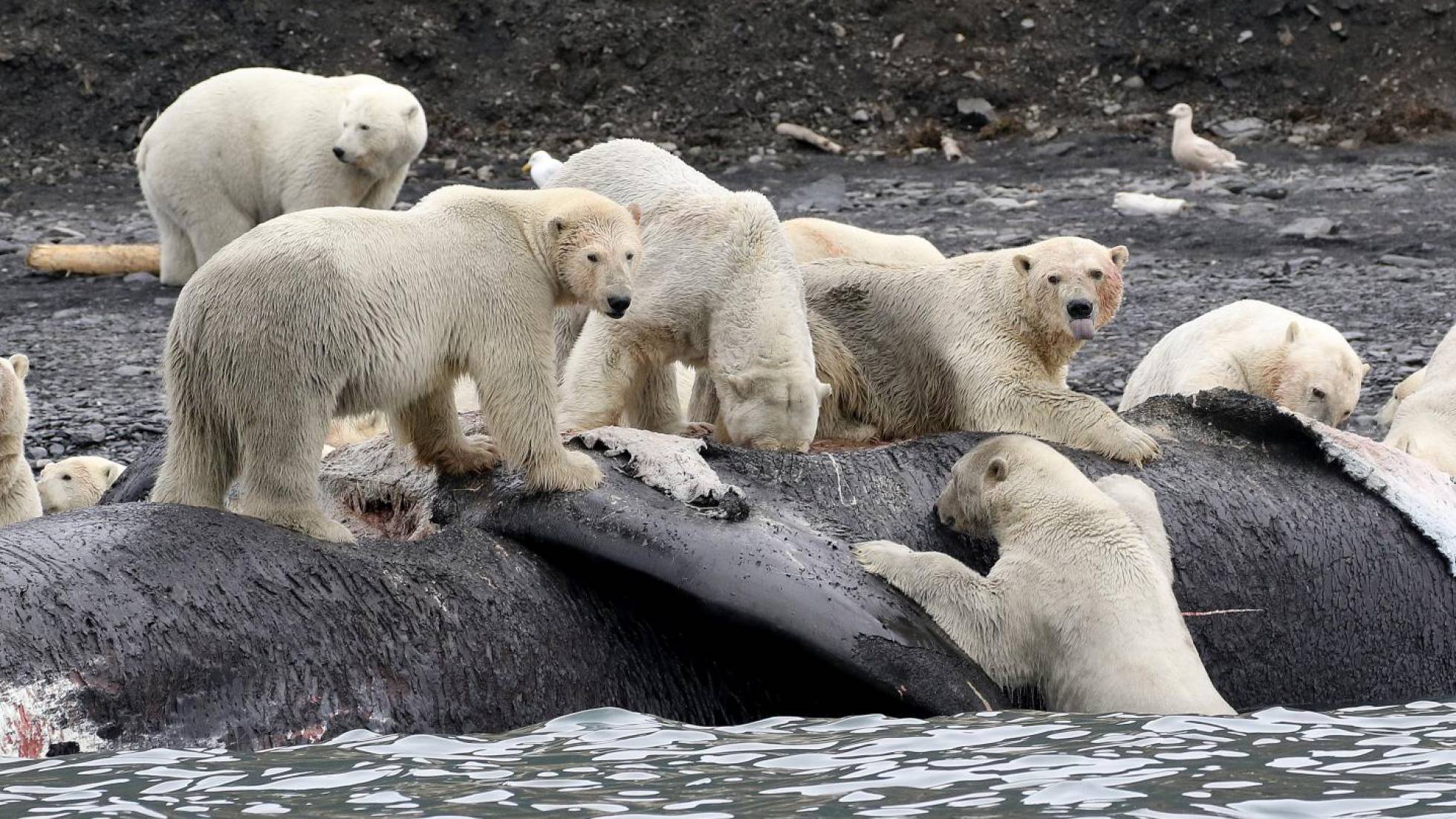 Polar bears are highly vulnerable due to climate change-induced sea ice decline, as it reduces their access to their primary source of prey, ice-obligate ringed seals. As a response, some bears have altered their foraging behavior by increasing their use of onshore food resources such as subsistence-harvested bowhead whale carcasses, shorebirds, and shorebird eggs. Dietary shifts can have significant health impacts for a species, including altering the host gut microbiome, which is an assemblage of microorganisms (predominantly bacteria) known to carry out many important metabolic and immune system processes for their host organism. To date, the gut microbiome is relatively understudied for many wild populations and species. Our work aims to preliminarily describe and compare the composition and diversity of gut microbial communities of southern Beaufort Sea and East Greenland polar bears, and further build from this knowledge by assessing how differences in the respective diets of these geographically disparate subpopulations might be alternately shaping their gut microbiota.
Megan Franz is an MSc student from McGill University working on this project for her thesis. She is supervised by Dr. Melissa McKinney, an Assistant Professor in the Department of Natural Resource Sciences at McGill University and Canada Research Chair in Ecological Change and Environmental Stressors, and is co-supervised by Dr. Lyle Whyte, a Professor in the Department of Natural Resource Sciences at McGill University and Canada Research Chair in Polar Microbiology. The project also involves collaboration with colleagues Kristin Laidre from the University of Washington and Todd Atwood from the USGS Alaska Science Center.
Polar bears are highly vulnerable due to climate change-induced sea ice decline, as it reduces their access to their primary source of prey, ice-obligate ringed seals. As a response, some bears have altered their foraging behavior by increasing their use of onshore food resources such as subsistence-harvested bowhead whale carcasses, shorebirds, and shorebird eggs. Dietary shifts can have significant health impacts for a species, including altering the host gut microbiome, which is an assemblage of microorganisms (predominantly bacteria) known to carry out many important metabolic and immune system processes for their host organism. To date, the gut microbiome is relatively understudied for many wild populations and species. Our work aims to preliminarily describe and compare the composition and diversity of gut microbial communities of southern Beaufort Sea and East Greenland polar bears, and further build from this knowledge by assessing how differences in the respective diets of these geographically disparate subpopulations might be alternately shaping their gut microbiota.
Megan Franz is an MSc student from McGill University working on this project for her thesis. She is supervised by Dr. Melissa McKinney, an Assistant Professor in the Department of Natural Resource Sciences at McGill University and Canada Research Chair in Ecological Change and Environmental Stressors, and is co-supervised by Dr. Lyle Whyte, a Professor in the Department of Natural Resource Sciences at McGill University and Canada Research Chair in Polar Microbiology. The project also involves collaboration with colleagues Kristin Laidre from the University of Washington and Todd Atwood from the USGS Alaska Science Center.
Bon appétit! Contaminants on the menu for North Atlantic killer whales?
 Killer whales are among the most contaminated animals on the planet, accumulating high tissue levels of synthetic contaminants. These contaminants, including PCBs (polychlorinated biphenyls) and DDTs (dichlorodiphenyltrichloroethanes) have been banned for decades, but are very slow to degrade and show strong accumulation through the food web, leading to elevated exposures in top predators. Such exposures put killer whales, the ocean's top predator, at risk for endocrine, reproductive, and immune-related health effects. It has been shown that diet is an important factor in contaminant variation among killer whale groups. However, the diet within and among groups of killer whales in the North Atlantic is not well understood. Our project aims to use high-resolution chemical tracers of diet measured from biopsy samples of free-ranging North Atlantic killer whales to gain insight into different diets of major groups of North Atlantic killer whales, and in turn, to understand how this feeding variation may lead to differences in exposure to major contaminant classes of environmental concern.
Killer whales are among the most contaminated animals on the planet, accumulating high tissue levels of synthetic contaminants. These contaminants, including PCBs (polychlorinated biphenyls) and DDTs (dichlorodiphenyltrichloroethanes) have been banned for decades, but are very slow to degrade and show strong accumulation through the food web, leading to elevated exposures in top predators. Such exposures put killer whales, the ocean's top predator, at risk for endocrine, reproductive, and immune-related health effects. It has been shown that diet is an important factor in contaminant variation among killer whale groups. However, the diet within and among groups of killer whales in the North Atlantic is not well understood. Our project aims to use high-resolution chemical tracers of diet measured from biopsy samples of free-ranging North Atlantic killer whales to gain insight into different diets of major groups of North Atlantic killer whales, and in turn, to understand how this feeding variation may lead to differences in exposure to major contaminant classes of environmental concern.
Melissa McKinney, Anaïs REMILI
A citizen science platform for the digitization of specimens from the Louis-Marie Herbarium
 The Louis-Marie Herbarium at Laval University is the largest university herbarium in Canada. With close to 800,000 specimens within its walls, the task of computerizing this collection is monumental. To date, about 37% of the specimens, mostly vascular plants, but also bryophytes and lichens, have been digitized.
The goal of digitizing the collection of the Louis-Marie Herbarium is to facilitate management and research in the collection, but especially to make the biodiversity data of this collection more accessible to researchers and the general public.
Thanks to the collaboration of the Quebec Center for Biodiversity Science, the Herbarium has been able to set up a collaborative portal to computerize the collection. Participants use images of herbarium sheets deposited on the portal to decipher and transcribe essential information such as the name of the species, the place and date of harvesting, or the name of the person who harvested the specimen. This tag information, sometimes handwritten, sometimes typed, but generally complex and very different from each other, is usually best interpreted by individuals, even if digital recognition technologies exist. We hope that this new portal will increase the rate of digitization of the Louis-Marie Herbarium.
Biodiversity data from the Louis-Marie Herbarium are disseminated on the Herbarium site (herbier.ulaval.ca) and deposited on several biodiversity data aggregators such as Canadensys, GBIF, the Consortium of North American Lichen and Bryophyte Herbaria and iDigBio.
The Louis-Marie Herbarium at Laval University is the largest university herbarium in Canada. With close to 800,000 specimens within its walls, the task of computerizing this collection is monumental. To date, about 37% of the specimens, mostly vascular plants, but also bryophytes and lichens, have been digitized.
The goal of digitizing the collection of the Louis-Marie Herbarium is to facilitate management and research in the collection, but especially to make the biodiversity data of this collection more accessible to researchers and the general public.
Thanks to the collaboration of the Quebec Center for Biodiversity Science, the Herbarium has been able to set up a collaborative portal to computerize the collection. Participants use images of herbarium sheets deposited on the portal to decipher and transcribe essential information such as the name of the species, the place and date of harvesting, or the name of the person who harvested the specimen. This tag information, sometimes handwritten, sometimes typed, but generally complex and very different from each other, is usually best interpreted by individuals, even if digital recognition technologies exist. We hope that this new portal will increase the rate of digitization of the Louis-Marie Herbarium.
Biodiversity data from the Louis-Marie Herbarium are disseminated on the Herbarium site (herbier.ulaval.ca) and deposited on several biodiversity data aggregators such as Canadensys, GBIF, the Consortium of North American Lichen and Bryophyte Herbaria and iDigBio.
Possibilities and limits of legal supervision of shore, coastline and floodplain protection in Quebec
 Since its adoption in 1987, the Policy for the Protection of Shores, Coastlines and Floodplains (PPRLPI) has been updated several times, the last time in 2017, in order to resolve certain enforcement issues. As part of the modernization of the authorization system under the Environment Quality Act (EQA), the adoption of the Act respecting the conservation of wetlands and water (CWHMA) and the implementation of the new Quebec Water Strategy (QWS), a complete overhaul of the provisions of the PPRLPI must be carried out in the medium term in order to make the necessary amendments. These would concern both the management of floodplains and the protection of shorelines and coastlines, in continental, coastal and possibly wetland environments. A fundamental reflection on the redesign of this Policy must be initiated. The integration of new knowledge and the consideration of climate change also motivate this redesign, as do the findings on the problems of application and uniformity of the minimum normative framework by municipalities. Considering these needs, the Direction de l'agroenvironnement et du milieu hydrique (DAEMH) decided to call on the Centre de la science de la biodiversité du Québec (CSBQ) to conduct a critical study of the regulatory measures of the European Union and some member countries as well as their implementation. Access the report here.
Since its adoption in 1987, the Policy for the Protection of Shores, Coastlines and Floodplains (PPRLPI) has been updated several times, the last time in 2017, in order to resolve certain enforcement issues. As part of the modernization of the authorization system under the Environment Quality Act (EQA), the adoption of the Act respecting the conservation of wetlands and water (CWHMA) and the implementation of the new Quebec Water Strategy (QWS), a complete overhaul of the provisions of the PPRLPI must be carried out in the medium term in order to make the necessary amendments. These would concern both the management of floodplains and the protection of shorelines and coastlines, in continental, coastal and possibly wetland environments. A fundamental reflection on the redesign of this Policy must be initiated. The integration of new knowledge and the consideration of climate change also motivate this redesign, as do the findings on the problems of application and uniformity of the minimum normative framework by municipalities. Considering these needs, the Direction de l'agroenvironnement et du milieu hydrique (DAEMH) decided to call on the Centre de la science de la biodiversité du Québec (CSBQ) to conduct a critical study of the regulatory measures of the European Union and some member countries as well as their implementation. Access the report here.
Funding source: Conseil de recherches en sciences humaines du Canada, CSBQ, MELCC
Every year, QCBS researchers and students develop new collaborations, co-supervise new students, write papers in prestigious peer-reviewed journals and explore new research topics. The QCBS research, collaboration and training activity dashboard is an interactive tool aiming to easily explore the dynamics of the QCBS researchers scientific production and training. It provides graphically rich summaries of our network, as it is today and as it evolves through time. Happy exploring!




